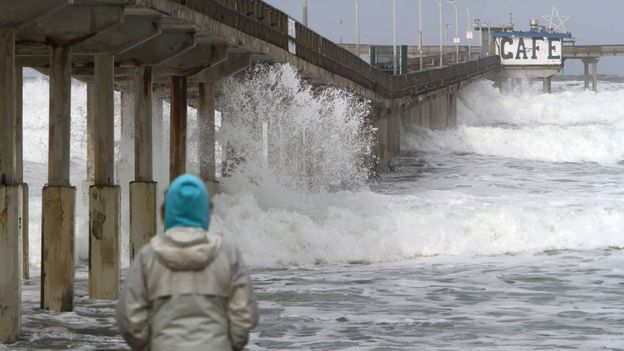What will an El Niño in 2023 mean for you?

But the changes in weather patterns brought by El Niño also brings other problems. Infectious diseases can become more prevalent in areas where conditions favour the insects and other pests that spread them. One study of the 2015-2016 El Niño event found that disease outbreaks became between 2.5%-28% more intense. There were increases in cases of West Nile virus, spread by mosquitoes, in California, while New Mexico, Arizona, Colorado, Utah and Texas also saw increase outbreaks of hantavirus pulmonary syndrome, which is mainly spread by rodents. There were even increases in the number of human cases of plague – if still only a handful of cases – in the western and southwestern states of the US.
During El Niño a lot of heat and moisture is transported from the tropics towards the poles. “When you increase the moisture at higher latitudes, it traps more thermal infrared radiation which leads to warming. This is what we call the greenhouse effect,” says DeWitt.
Even a temporary breach of the 1.5C threshold due to rising emissions and this year’s El Niño, as predicted by the World Meteorological Organization, could lead to widespread human suffering worldwide. According to a recent study by the University of Exeter in the UK, limiting long-term global warming to 1.5C could save billions of people from exposure to dangerous heat (average temperature of 29C or higher).
Current policies are projected to lead to 2.7C of warming globally by the end of the century, which could leave two billion people exposed to dangerous levels of heat worldwide, the authors say. Limiting warming to 1.5C would mean five times fewer people live in dangerous heat and would help prevent climate-related migration and detrimental health outcomes, including pregnancy loss and impaired brain function, says Tim Lenton, co-author of the study and director of the Global Systems Institute at the University of Exeter.
There are concerns that as carbon emissions continue to rise, future El Niño events might tip global temperatures above the 1.5C threshold more and more often.
“Every 0.1C really matters,” says Lenton. “Every 0.1C of warming we can avoid, by our calculation, is saving 140 million people from exposure to unprecedented heat and the harms that could come with it.”
“It’s saving hundreds of millions of people from harm and that should be a huge incentive to work harder to get to zero emissions.”
—
Join one million Future fans by liking us on Facebook, or follow us on Twitter or Instagram.
If you liked this story, sign up for the weekly bbc.com features newsletter, called “The Essential List” – a handpicked selection of stories from BBC Future, Culture, Worklife, Travel and Reel delivered to your inbox every Friday.


:no_upscale()/cdn.vox-cdn.com/uploads/chorus_image/image/72391281/490118108.0.jpg)










